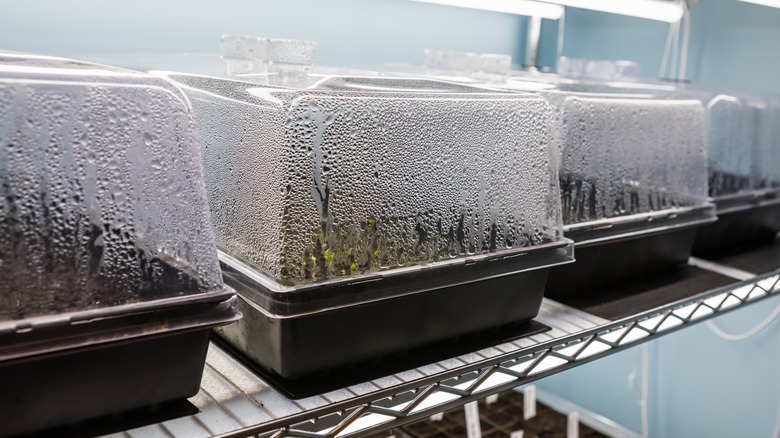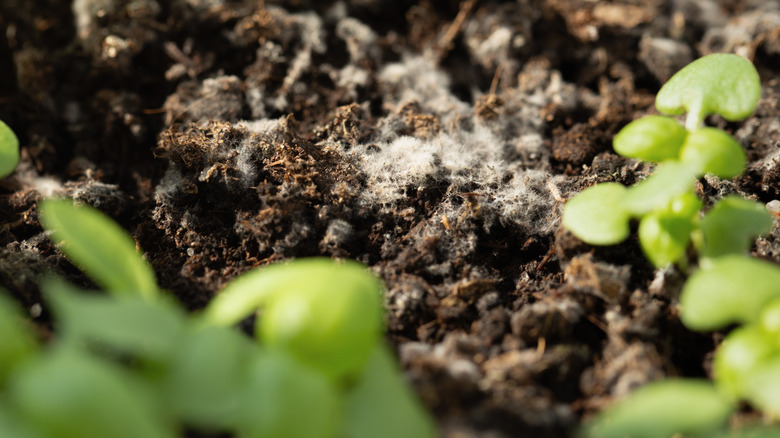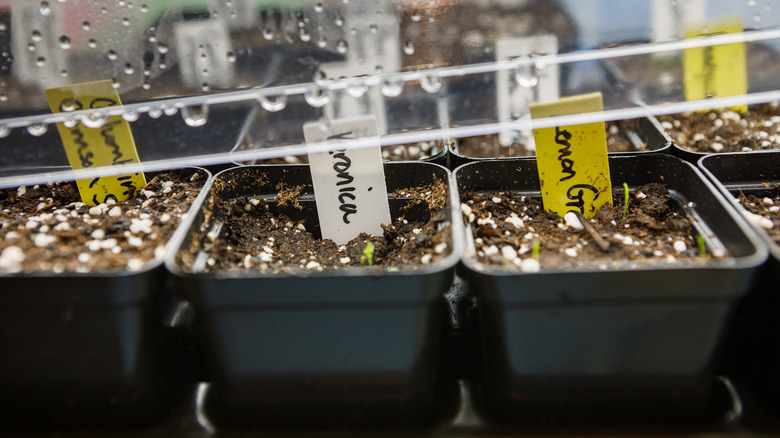The Humidity Mistake You Might Be Making When Trying To Start Seeds
When you venture into the world of gardening, starting seeds can be a thrilling yet intricate process. If you're among those who grow plants in pots, you've likely encountered the concept of a humidity dome. This tool, sometimes paired with heat mats, acts as a mini-greenhouse that covers your seed trays. It's a clear, plastic cover — think of it as a small, transparent dome — that snugly fits over trays or pots to lock in moisture and warmth. By creating a microclimate that mimics the conditions seeds need to germinate, humidity domes play a crucial role in keeping moisture levels consistent, ensuring a warm, cozy setting for those seeds to wake up and grow, protecting them from the outside environment. Their effectiveness in boosting germination rates and speeding up sprouting times is especially appreciated by those in less-than-ideal climates.
However, there's a pivotal step that some overlook: removing the dome at the right time. While it's a game-changer to give your plants moisture in the early stages of seed starting, leaving the dome on for too long can create a counterproductive environment of excessive moisture. This shift from beneficial to harmful happens almost as soon as those seeds poke through the soil. You'll have to keep a close eye on your sprouts and adjust their environment to suit their evolving needs. This way, you ensure they have the best start in their journey from seed to plant.
The risks of over-humidity: mold and root issues
As your seeds transition from dormancy to growth, they require not just moisture but also air circulation and light — elements that are restricted by an overstay of the humidity dome. As mentioned, humidity domes are designed to remain over the seed tray until the first signs of germination appear or you notice the tray beginning to sprout. Once these initial green shoots appear, the very conditions that helped kickstart their growth — the warm, moist air under the dome — can swiftly turn against them. Seedling mold and a condition known as "damping off" are primary concerns at this stage. Damping off, caused by a variety of fungal pathogens, can swiftly destroy young seedlings before they fully develop. The symptoms include a thin, water-soaked stem at the soil line, leading to the seedling collapsing and dying.
High humidity levels can also interfere with the plant's ability to thrive. This disruption in the evaporation process hampers the plants' growth by preventing roots from absorbing nutrients, leading to stagnation in development. Root rot is another significant concern in overly moist environments. This condition results in the decay of root systems, making it impossible for plants to absorb nutrients and water efficiently. Symptoms of root rot include stunted growth and discolored leaves, often misleadingly indicating a nutrient deficiency. In essence, the way you manage the transition from dome-covered to dome-free is crucial. It's about understanding the unique needs of your plants and adjusting their environment accordingly.
Knowing when to remove the humidity dome
Right after your seeds break through the soil, you've reached a crucial moment that can define their path to becoming healthy plants. This period requires a delicate touch, particularly when it comes to adjusting their environment. A common practice among gardeners during this time is to slightly lift or prop up the humidity dome covering their seed trays. This method is a gentle nudge rather than a shock to the system, especially for those more delicate varieties that might not take too kindly to a sudden drop in humidity. The goal here is to introduce them slowly to a new world — one that's a bit less humid than what they've been used to under the dome.
The game-changer here is that some humidity domes are designed with adjustable vents. These handy features allow you to gradually decrease humidity levels inside the dome, letting in just the right amount of air to start getting your seedlings accustomed to their eventual natural habitat. It's vital to remember that once seeds sprout, they're going to need plenty of light and good air circulation to keep growing strong. However, it's not a one-size-fits-all scenario when it comes to removing the humidity dome. Take peppers, for instance — they enjoy a bit more time under the dome, even after sprouting. Keeping the vents partially open lets them bask in a slightly more humid and warm environment, which is just the way they like it for optimal growth.


